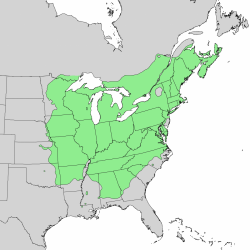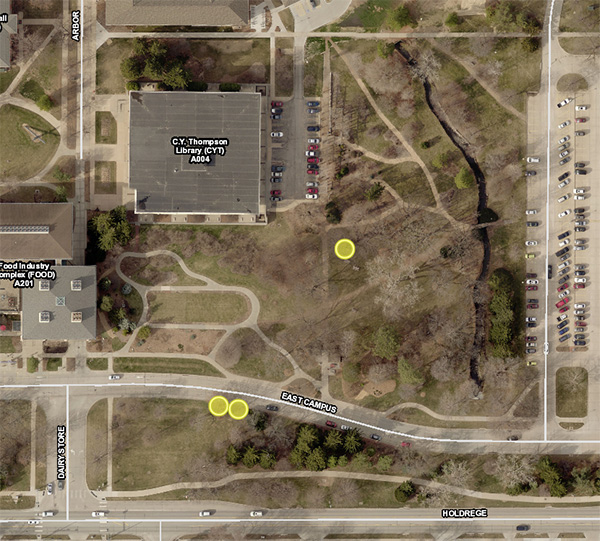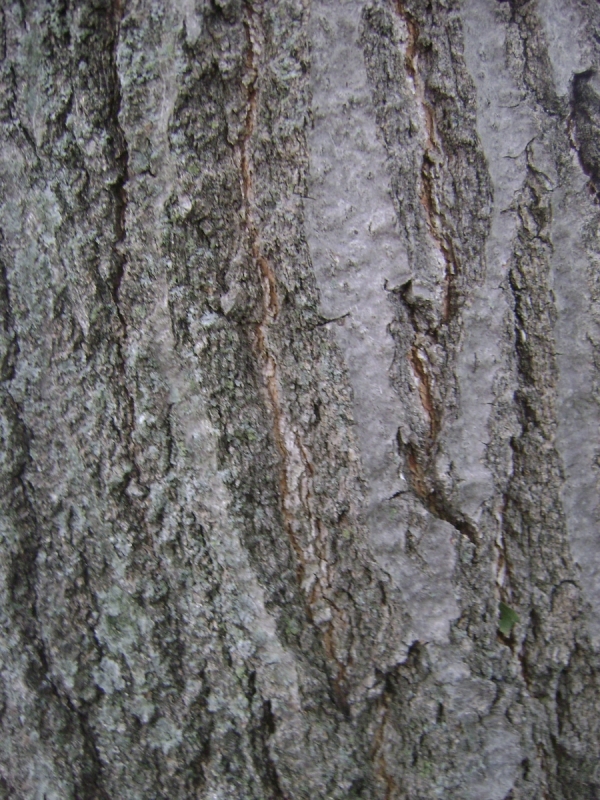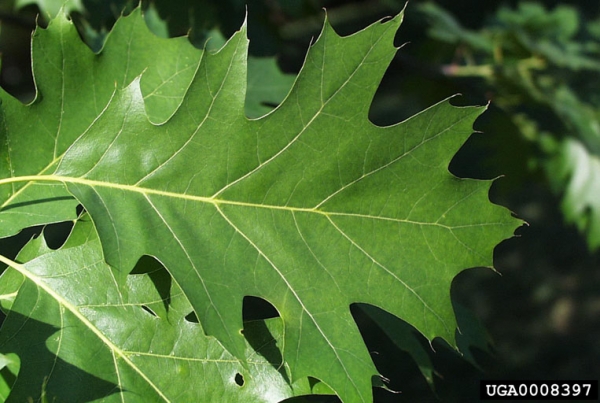
About Oaks (home) | Map | Plant List | Cultivar/Species Information | Sources | Other Campus Oaks of Interest
Latin Name: Quercus rubra
Common Name: Red Oak

Cultivar:
Family: Fagaceae
Division: Red
Range: eastern and central U.S. and southeast and south-central Canada; in Atlantic coast southern states from the piedmont west, south into Georgia almost to the Florida panhandle; west to Minnesota, Nebraska, Kansas, and Oklahoma
Introduced: 1800
Sun/Shade: more shade tolerant than many oaks, able to establish under more mature trees
Height: 50' - 70' × same, larger outside of cultivation
Form: rounded, spreading
Zones: 4 - 8
Flower: Male catkins, 2" - 4"; female flowers are inconspicuous spikes in the leaf axils.
Leaves: dark green, lustrous above, grayish white below; large, 5" - 8" with 7 to 11 pointed lobes, 2nd pair from tip the widest, bristle-tipped, shallow sinuses
Fall Color: russet red, good
Fruit: Acorns, solitary or in pairs; ¾" - 1"; flat, thick, saucer-shaped cup at the base.
Buds: dark chestnut brown
Bark: distinctive, identifying feature, a striping effect from large smooth vertical plates with furrows between
Wildlife: Foliage eaten by the caterpillars of numerous butterflies, moths and skippers. "Notwithstanding the bitter meat, the large acorns of Northern Red Oak are an attractive source of food to many mammals and some birds. Such mammals as the Black Bear, White-Tailed Deer, Raccoon, Fox Squirrel, Gray Squirrel, Red Squirrel, Southern Flying Squirrel, Eastern Chipmunk, White-Footed Mouse, and wild hogs eat the acorns, as do such birds as the Wood Duck, Wild Turkey, Ruffed Grouse, Bobwhite, Monk Parakeet (in urban areas), Red-Headed Woodpecker, Red-Bellied Woodpecker, Passenger Pigeon (now extinct), and others. Many birds construct nests in the branches of this tree, while tree squirrels, bats, woodpeckers, and other birds have dens or nests in its cavities." — https://www.illinoiswildflowers.info/trees/plants/red_oak.html
For detailed information about insect associations see the Illinois Wildflowers link.
Disease issues:
Cultural Uses: Acorns leached with linden ashes and used for food by many indigenous peoples. Tribes' medicinal uses include bark (chewed or infused) used for dysentery, mouth sores, as an emetic and antiseptic, for chapped skin, hoarseness, coughs. The wood was used for various household implements. Bark for a black dye.
Folklore:
Notes: An invasive species in Europe
Where to find Quercus rubra in Maxwell Arboretum:
←Previous Oak → NEXT OAK
All images from Maxwell Arboretum unless noted
Form
This is the Peterson Family Tree at the south end of the Vine Arbor
Maturing Acorn

Bark
Paul Wray, Iowa State University, Bugwood.org
Form
Hardin Hall
←Previous Oak → NEXT OAK
or Return to main Oak page